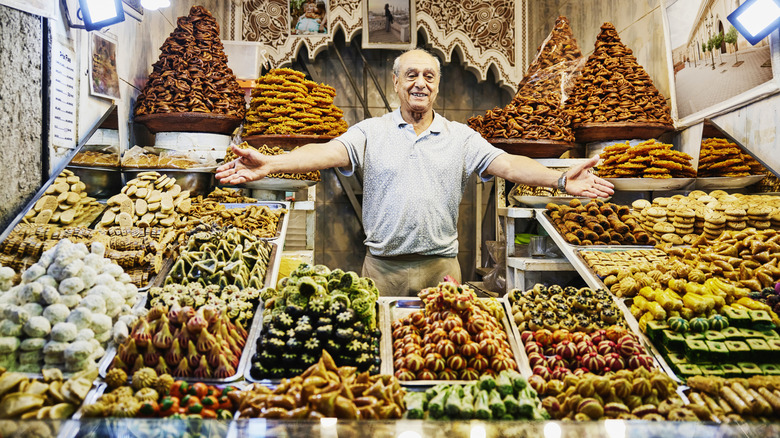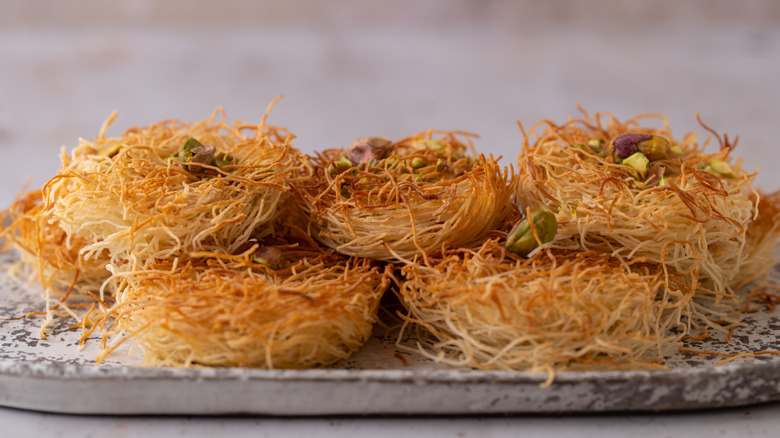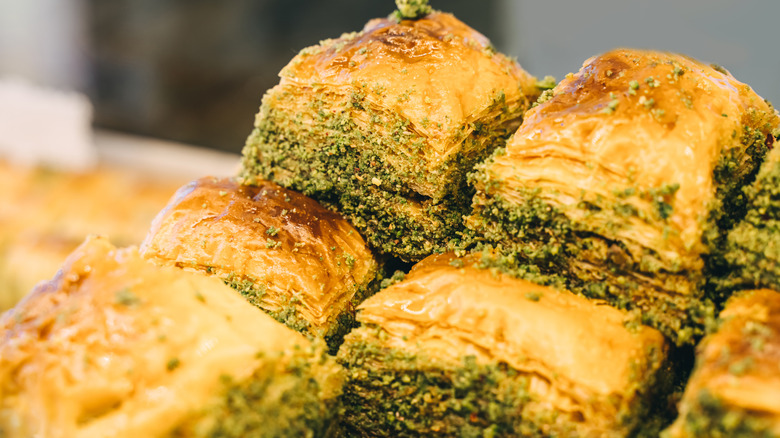Kataifi Vs Baklava: What Is The Actual Difference?
Baklava and kataifi are two delicious and highly regarded Middle Eastern and Mediterranean desserts which share similarities but have distinct differences in texture, preparation, and presentation. Both of these treats are rich, sweet, and soaked in syrup typically flavored with honey, cinnamon, or citrus. If you're getting nit-picky, the primary difference comes down to the pastry used. Baklava is made with thin, flaky layers of phyllo dough while kataifi is made with finely shredded phyllo which creates a nest-like texture.
Because of this difference, baklava is crisp and structured, with well-defined layers that hold chopped nuts. Kataifi has a more delicate, almost noodle-like appearance that creates a soft and crunchy contrast. Both are popular desserts in Greek, Turkish, and Middle Eastern cuisines and are often served during celebrations and holidays. The super sweet, syrupy notes they both hit are a strong and undeniable similarity, but the unique textures and methods of preparation make them distinct enough.
What is kataifi and how is it made?
Kataifi might look like shredded wheat at first glance, but it's actually a form of phyllo dough that's been finely shredded into thin strands. You wind them around in the signature nest-like structure and you end up with a really cool-looking dessert that's fun to eat.
To make kataifi, the shredded dough is usually wrapped around a filling of chopped nuts such as walnuts, almonds, or pistachios. Some versions also include cheese or custard fillings for a creamier take on the dessert. Once assembled, the nests or rolls are baked until golden brown and then doused in a sweet syrup made from sugar, honey, and lemon juice. The flavors are really intense, as you get a combination of crispy, golden strands on the outside and a soft, nutty, and syrup-soaked interior.
One of the reasons kataifi stands out is because of its versatility. Baklava is almost always cut into squares or diamonds, but kataifi can be shaped into rolls, nests, or layered trays, so you can do more creative presentations. The shredded phyllo also makes kataifi extra crunchy, so it contrasts beautifully with the sticky syrup that soaks into the pastry.
How baklava differs in texture and flavor
Baklava is huge on layers. This dessert is made by stacking multiple thin sheets of phyllo dough, brushing each layer with butter to create a crisp, flaky, flawless texture. Between the layers, a filling of chopped nuts — typically walnuts, pistachios, or almonds — is added, which are often seasoned with cinnamon or cloves. After baking, baklava is also drenched in honey or syrup, infusing the pastry with a deep, caramelized sweetness.
The beauty of baklava is in its structure. Kataifi has a delicate, nest-like form, but baklava holds its shape well, which makes it easy to cut into uniform pieces. The layers create a crisp bite that works amazingly well with the sticky, nutty filling, giving baklava a more structured, balanced texture compared to the airy, stringy crunch of kataifi.
Flavor-wise, both desserts share similarities because they're both soaked in syrup, but baklava has a denser, richer taste. The traditional combination of cinnamon, honey, and nuts makes it warm and aromatic, while kataifi often has a lighter, crispier feel with a delicate crunch.


